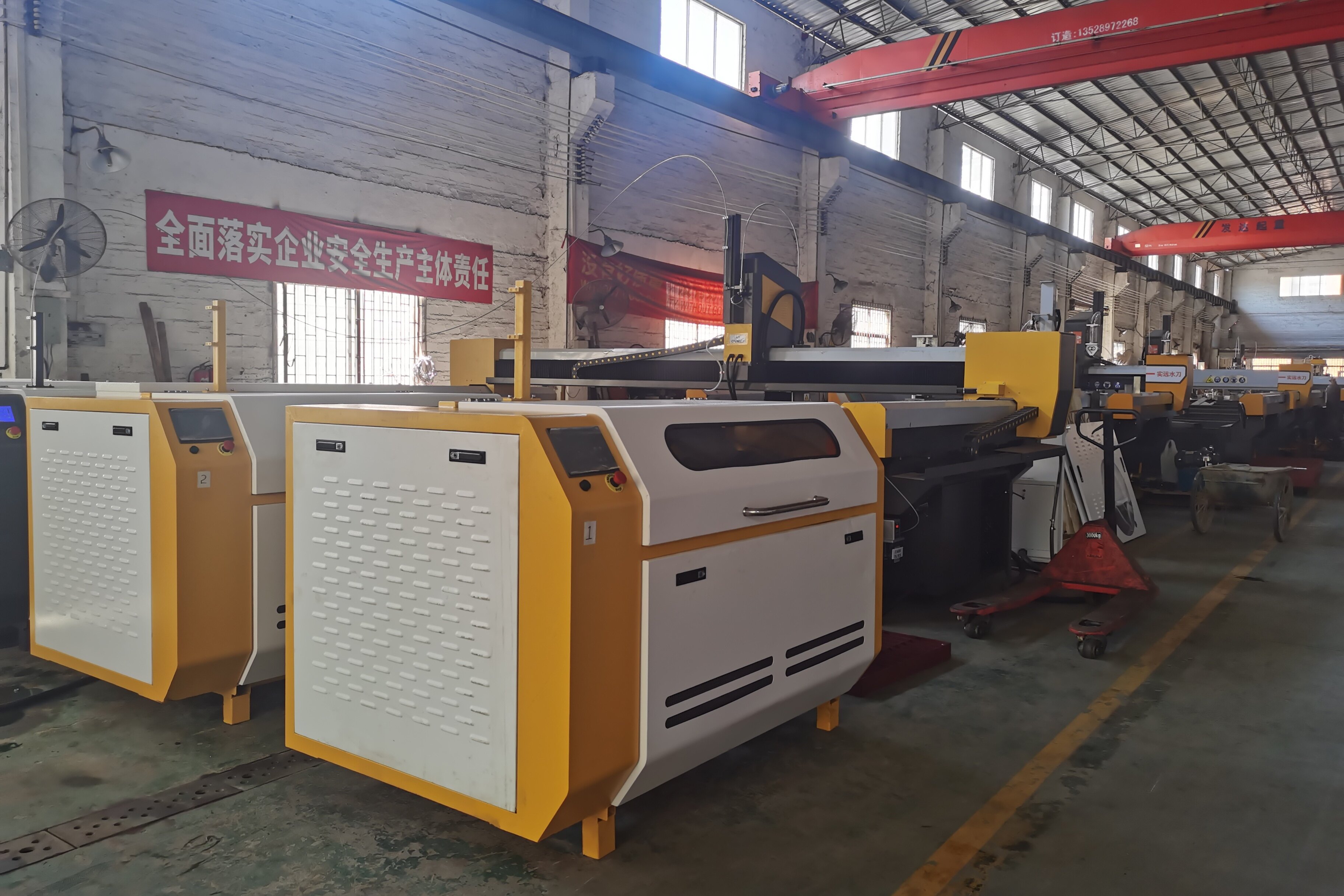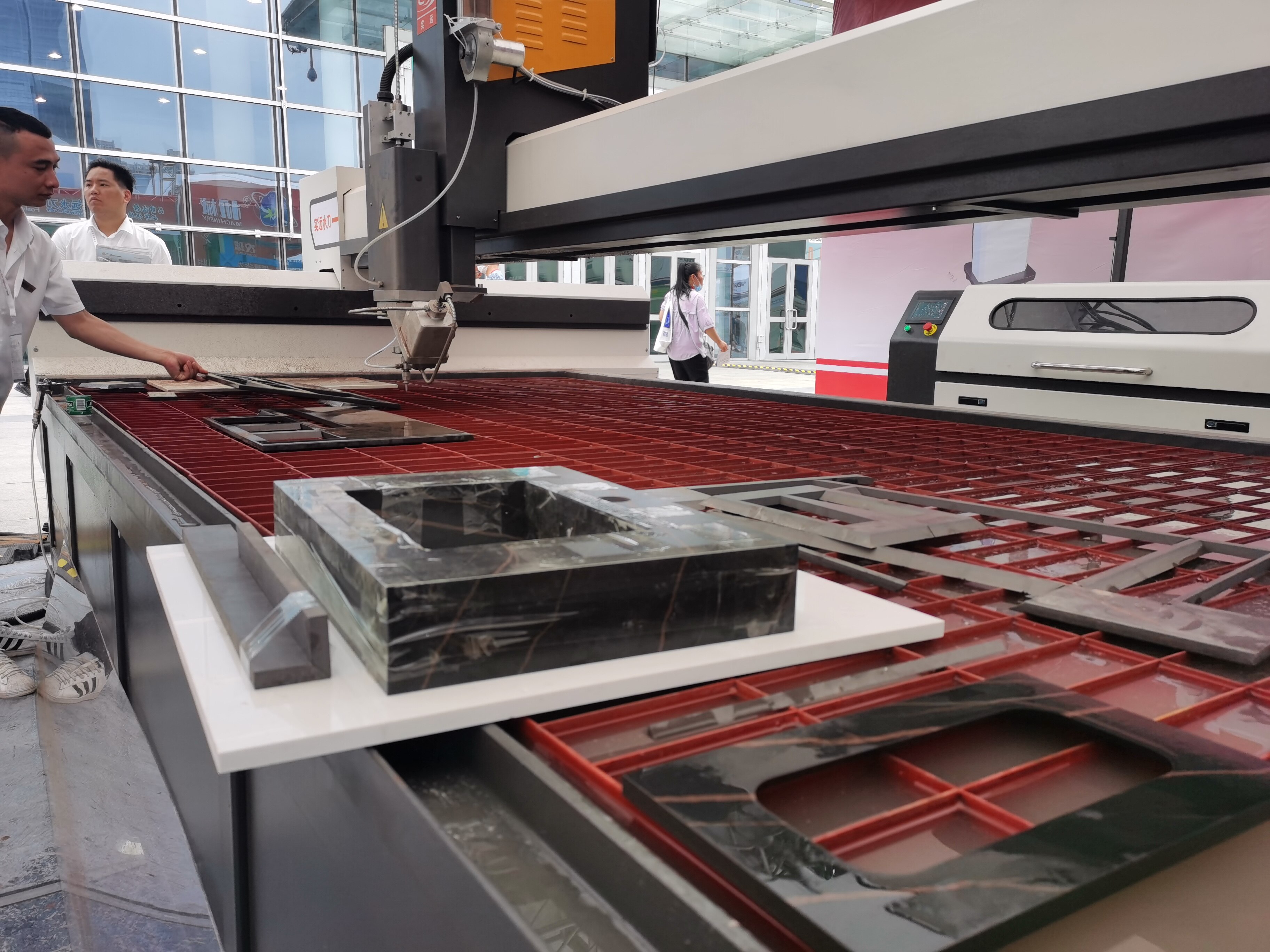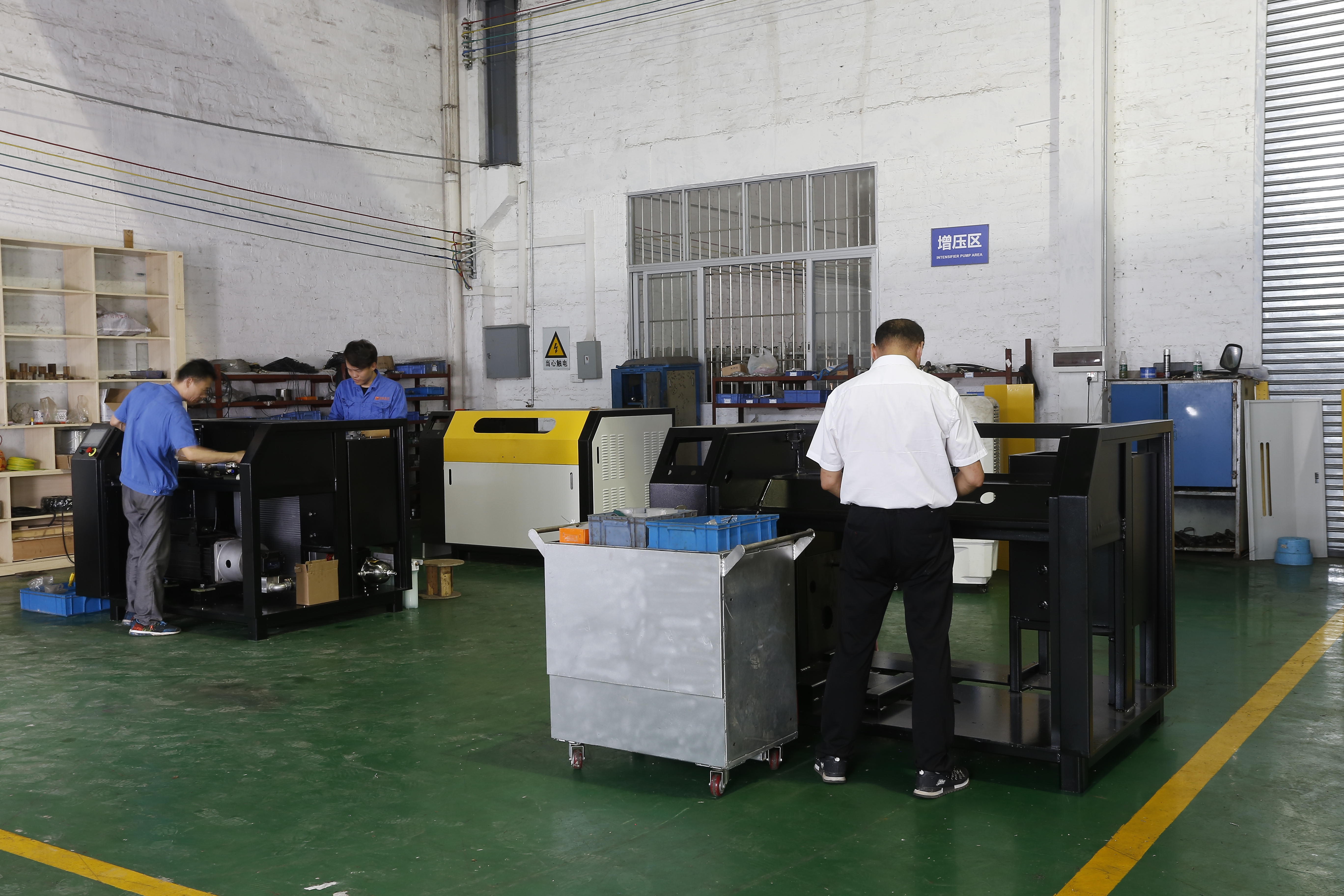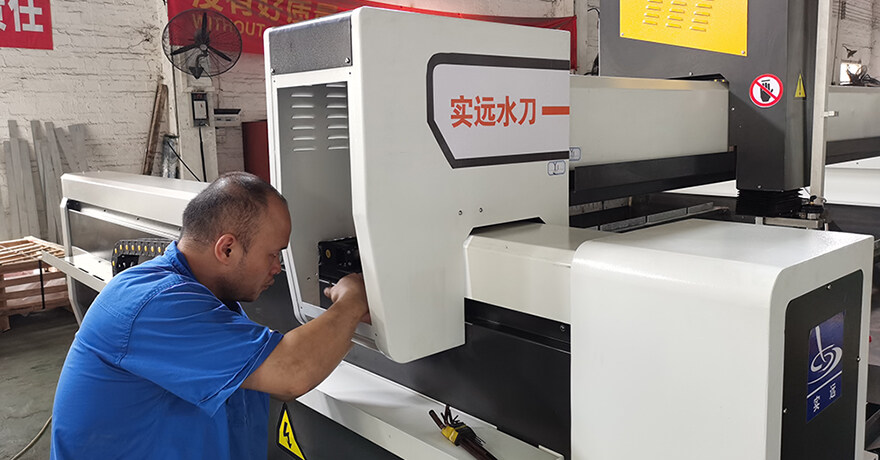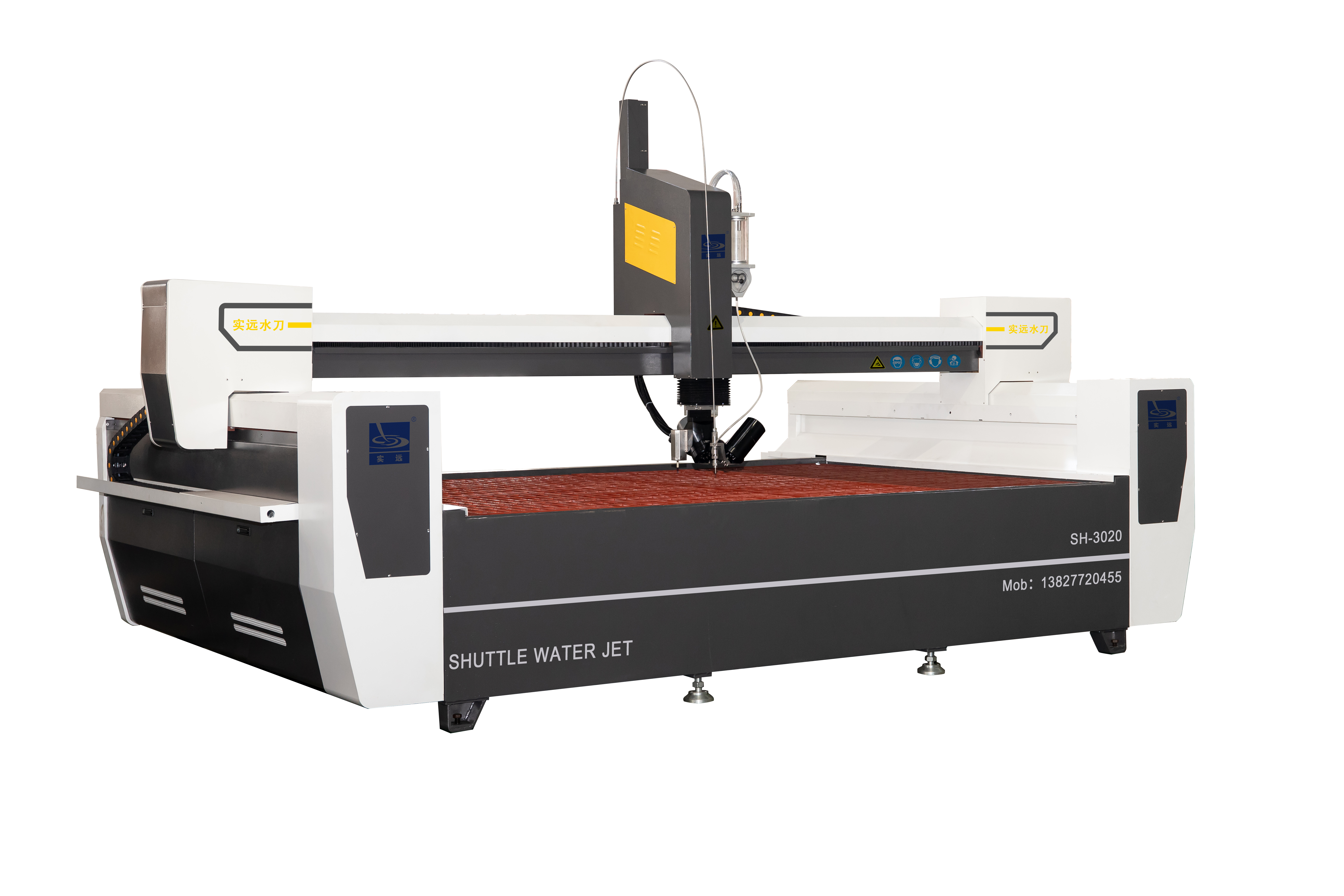
The working principle and advantages of portable water jet
There are many ways to cut. Today, the editor will introduce portable waterjets to you. Let us quickly follow us to find out. Water jet, also known as water cutting, its real name is high-pressure water jet cutting technology. The technology originated in the United States. Since the 1980s, water jet cutting has been used in industrial production. Its characteristic is that it can cut any material at one time with any curve. Water cutting has unique application areas, such as field ammunition destruction, chemical equipment cutting operations, emergency firefighting and lifesaving, etc. The reason for such a special application is related to its working principle.
Working principle: The water jet uses ultra-high pressure technology to pressurize the water flow, and then through a nozzle with an inner hole diameter of about 0.2 mm, the jet forms a high-speed jet with a speed of about 2 times the speed of sound for cutting operations. Water flow includes two types of pure water, a mixed liquid of pure water and abrasives. Abrasives usually use garnet sand, emery and other minerals with sharp particles and higher hardness, which can increase the hardness of the water flow and enable it to cut harder materials such as steel plates.
Laser cutting is more suitable for ferrous and non-ferrous metals. One of the differences between water cutting, spark cutting and laser cutting is that it belongs to cold cutting. The heat generated by the water jet in the cutting process can be quickly taken away by the water flow. Therefore, the water jet can cut glass, ceramics and other materials that are not resistant to high temperatures; in addition, the low pressure cutting in the water jet can be applied to special industries, such as: hazardous chemicals , Petroleum, coal, etc.
Advantages: small thermal influence, wide application range.
The advantage of water jet is that it has little thermal influence on the parts. Other processing methods do not have this advantage. In addition, the deformation and internal stress of waterjet cutting parts are smaller than other processing methods described above. There is no open flame during waterjet cutting. There will be no flammable and explosive incidents. Advantages of waterjet technology.
How to classify?
(1) Low-pressure cutting and high-pressure cutting: The water pressure below 100MPa is called low-pressure cutting. If the water pressure exceeds a certain threshold, even pure water will detonate certain chemicals, and the waterjet added with abrasives may cause the instability of special chemicals. Water jets above 200MPa are mainly used for industrial cutting.
(2) Sand-added type and no-sand type: the former is added with abrasive, the latter is pure water in the water stream.
(3) Post-mixing and pre-mixing: There are two ways to add abrasives: some large-scale water cutting equipment usually adds abrasives at the water outlet by siphoning to improve the water cutting ability; the other way is to add abrasives in advance. The abrasive is mixed with pure water. The advantage of pre-mixing is that it can avoid energy consumption for siphoning.
portable water jet
Working principle: The water jet uses ultra-high pressure technology to pressurize the water flow, and then through a nozzle with an inner hole diameter of about 0.2 mm, the jet forms a high-speed jet with a speed of about 2 times the speed of sound for cutting operations. Water flow includes two types of pure water, a mixed liquid of pure water and abrasives. Abrasives usually use garnet sand, emery and other minerals with sharp particles and higher hardness, which can increase the hardness of the water flow and enable it to cut harder materials such as steel plates.
Laser cutting is more suitable for ferrous and non-ferrous metals. One of the differences between water cutting, spark cutting and laser cutting is that it belongs to cold cutting. The heat generated by the water jet in the cutting process can be quickly taken away by the water flow. Therefore, the water jet can cut glass, ceramics and other materials that are not resistant to high temperatures; in addition, the low pressure cutting in the water jet can be applied to special industries, such as: hazardous chemicals , Petroleum, coal, etc.
Advantages: small thermal influence, wide application range.
The advantage of water jet is that it has little thermal influence on the parts. Other processing methods do not have this advantage. In addition, the deformation and internal stress of waterjet cutting parts are smaller than other processing methods described above. There is no open flame during waterjet cutting. There will be no flammable and explosive incidents. Advantages of waterjet technology.
How to classify?
(1) Low-pressure cutting and high-pressure cutting: The water pressure below 100MPa is called low-pressure cutting. If the water pressure exceeds a certain threshold, even pure water will detonate certain chemicals, and the waterjet added with abrasives may cause the instability of special chemicals. Water jets above 200MPa are mainly used for industrial cutting.
(2) Sand-added type and no-sand type: the former is added with abrasive, the latter is pure water in the water stream.
(3) Post-mixing and pre-mixing: There are two ways to add abrasives: some large-scale water cutting equipment usually adds abrasives at the water outlet by siphoning to improve the water cutting ability; the other way is to add abrasives in advance. The abrasive is mixed with pure water. The advantage of pre-mixing is that it can avoid energy consumption for siphoning.
portable water jet
